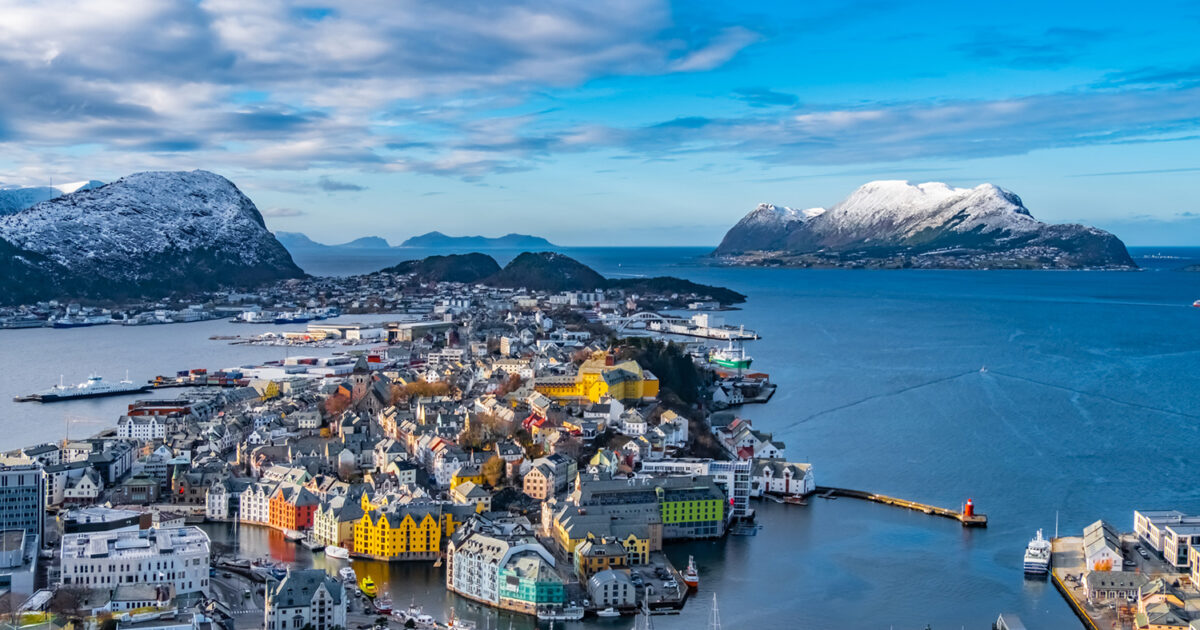Alesud, a small town on its west coast Norwayit’s a place that you can hardly forget. As if it has come out of fairy tale pages, it spreads on islands associated with bridges and embraced by fjord and mountains.
What makes it really special but not only its location, but the unique architecture of a physiognomy. Its buildings, with its colorful fronts, pointed roofs and elaborate decorative elements, give the feeling that you are in a living museum of the European Art Nouveau.
This peculiarity has its roots in a great disaster. In January 1904, a fire broke out in the night and within a few hours it almost completely destroyed Aezund.
On the night of January 23, 1904, the homonymous fire broke out in the city, one of the most terrible of the many fires suffered by the Norwegian cities, which were once largely built of wood. Essentially the whole city was destroyed overnight, with a windstorm that helped the flames and the population rushed to leave the city overnight. According to official figures of the time, only one person died of the fire, the 76 -year -old Anene, but more than 800 houses became ash and more than 10,000 people were left homeless.
The blow was huge, but the disaster soon turned into an opportunity. The reconstruction coincided with the flourishing of Art Nouveau in Europe, and the young Norwegian architects who had studied abroad brought the freshest ideas with them.
The result was a city built almost entirely in an articular style, something rare for Scandinavian data, while most buildings were built between 1904 and 1907. Houses with facades painted in green, blue or pink, balconies with iron rails, windows.
Aezund’s new image was not only a matter of aesthetics, but also a “statement”. Norway, who had just gained her independence, wanted to show that she could stand up to the big European countries and follow their artistic currents.
Today, walking to Aezund you feel that the whole city is a well -built setting. More than 300 buildings of that period are preserved and preserved, giving Aeless a unique uniformity.
The JugendtilSentert Museum, housed in one of the first buildings of reconstruction, details the history of the city and presents designs, furniture and objects of the time.
Its aesthetic heritage is an attraction for visitors from all over the world, arriving here to photograph colorful houses, wander the narrow streets of the port, or climb Aksla to enjoy the famous panoramic views of the islands.
What makes the city really special is its cohesion. Unlike other Norwegian cities that were gradually developed and with more “scattered” stylistic identity, Alesud was built almost from the beginning in a few years, giving a single look that you can hardly meet elsewhere. This peculiarity is not only an architectural ornament, but also a part of the collective memory of the inhabitants, who continue to see the destruction of 1904 not only as a tragedy but also as a regeneration starting point.
